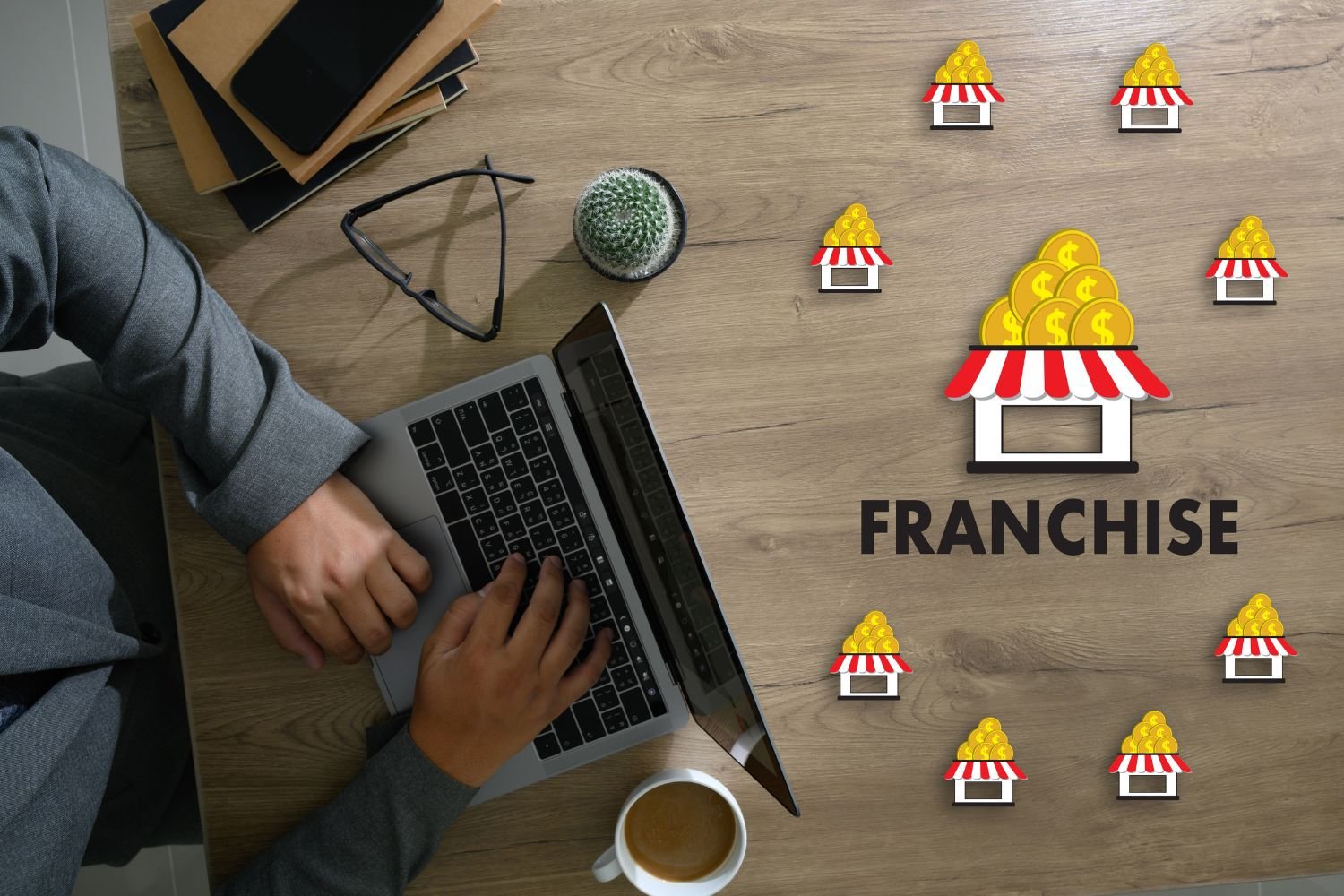Entrepreneurs compare dropshipping vs traditional retail and often ask which is the best overall option or, at least, for them in particular.
The entrepreneurial spirit whispers sweet nothings in your ear: “Start your own business! Be your own boss! Build an empire!” But then reality bites. Questions swarm like gnats – what to sell? Where to sell it? And most importantly, how to manage inventory without bursting your bank account? This is where the age-old retail tug-of-war begins: dropshipping vs traditional retail. Both paths have their own allure and, of course, their own set of hidden thorns. So, before you plunge headfirst into the world of commerce, let’s delve into the nitty-gritty of each model and equip you with the knowledge to choose your winning battlefield.
Dropshipping: The Lightweight Contender
Imagine a business where you never touch a single product. Sounds like a unicorn, right? Well, that’s dropshipping in a nutshell. Forget about warehouses overflowing with boxes; in this model, you partner with suppliers who store and ship your products directly to your customers. It’s like your own personal genie in a lamp, conjuring up orders on demand.
Pros:
- Low startup costs: No inventory means no hefty upfront investment. This makes dropshipping the dream model for bootstrapping entrepreneurs.
- Scalability on steroids: Adapting to demand fluctuations is a breeze. Need to add a new hot-selling item? Simply expand your online catalog without worrying about storage space.
- Location independence: Run your business from a beach hammock or the bustling city center – dropshipping grants you geographical freedom.
- Wider product variety: Offer a dizzying array of products without the constraints of physical inventory.
Cons:
- Profit margins can be tight: Dropshippers often compete on price, leading to slimmer profit margins compared to traditional retailers.
- Limited control over shipping and quality: You rely on your supplier’s fulfillment and quality control standards, which can be hit-or-miss.
- Brand building can be tricky: Building a strong brand identity can be challenging when you don’t directly handle the customer experience.
- Competition is fierce: Dropshipping’s allure attracts many, resulting in a saturated market and intense competition.
Example: Alicia, a creative soul with a knack for quirky home decor, starts her online store “Quirky Haven” via dropshipping. She showcases a vast collection of artisan-made pillows, mugs, and wall art, all sourced from different suppliers. Alicia enjoys low overhead costs and can easily add new items based on customer trends. However, she faces pressure from competitors offering similar products at slightly lower prices and struggles to build a distinct brand identity without directly interacting with customers.
Traditional Retail: The Heavyweight Champion
Picture the classic brick-and-mortar store: shelves brimming with goods, the scent of new merchandise swirling in the air, and friendly salespeople ready to assist. Traditional retail offers a tangible experience, a tactile connection with the products you sell.
Pros:
- Higher profit margins: Direct control over inventory allows for strategic pricing and potentially larger profit margins than dropshipping.
- Greater control over brand and customer experience: Every interaction shapes your brand story, allowing you to build a loyal customer base.
- Product quality assurance: You directly handle inventory, meaning you can enforce stricter quality control measures.
- Physical presence boosts trust: A brick-and-mortar store offers a sense of permanence and builds trust with local customers.
Cons:
- High startup costs: Renting space, purchasing inventory, and hiring staff require significant upfront investment.
- Less scalability: Adapting to fluctuating demand can be tricky, particularly if you have excess inventory.
- Location dependence: Your business is tied to a physical location, limiting your reach and flexibility.
- Inventory management headaches: Warehousing, stocking, and managing inventory adds another layer of complexity to your operations.
Example: Michael, a seasoned chef with a passion for high-quality kitchenware, opens his dream store “Chef’s Haven.” He curates a selection of premium cookware, hand-picked from reputable brands. Michael enjoys higher profit margins and can provide personalized customer service. However, he faces significant rent and inventory costs, and his customer base is limited to his local community.
The Verdict: A Draw with Different Strokes
Choosing between dropshipping and traditional retail isn’t a one-size-fits-all solution. It depends on your unique goals, resources, and risk tolerance. Dropshipping shines for its low entry barrier, scalability, and product variety. But it comes with tighter margins, brand-building challenges, and reliance on external suppliers. Traditional retail offers greater control, a stronger brand presence, and potentially higher profits. However, it’s weighed down by higher startup costs, limited reach, and inventory management burdens.
**Remember, the ideal choice is not cast in stone; it’s a canvas you paint with your specific goals and resources. Here are some additional factors to consider:
- Your product type: Bulky or fragile items might be challenging for dropshipping, while digital products are perfect for a lightweight model.
- Target audience: If you cater to a local market, a physical store might be ideal. For a global audience, dropshipping’s online reach shines.
- Personal preferences: Do you thrive on hands-on product management or prefer a lean, digital operation? Choose the model that aligns with your work style.
Beyond the Binary: Hybrid Options and the Future of Retail
The beauty of business isn’t confined to strict boxes. The future of retail holds exciting possibilities in blending dropshipping and traditional models. Imagine a boutique stocking select high-end items while dropshipping complementary accessories, maximizing both brand control and product variety. Or picture a local store hosting pop-up shops for rotating dropshipping brands, creating a curated and dynamic shopping experience.
Remember, the goal is to find a model that fuels your entrepreneurial engine and propels you towards your vision. Don’t be afraid to experiment, adapt, and evolve your approach as your business grows. Embrace the dynamic landscape of retail and use its diverse options to craft the perfect launchpad for your unique venture.
Case in point: Sarah, a young entrepreneur with a passion for sustainable fashion, launches “Eco Threads.” Initially, she operates solely online, dropshipping ethically-made clothing from around the world. As her brand gains traction, she opens a pop-up shop in a trendy local market, showcasing select dropshipping items alongside carefully curated vintage pieces. This hybrid approach allows Sarah to maintain low overhead costs while offering a unique and engaging shopping experience.
Final Words: From Binary to Beyond
Dropshipping vs traditional retail – it’s not a battle, it’s a dance. Each model offers its own rhythm, its own set of steps. Choose the one that resonates with your entrepreneurial spirit, the one that lets you move to the beat of your business goals. And remember, the stage isn’t static; you can switch partners, explore new moves, and even invent your own dance entirely. So, put on your entrepreneurial shoes, embrace the music of opportunity, and step into the vibrant world of retail, ready to write your own success story.
Bonus Tips:
- Research thoroughly: Before committing to any model, delve deep into both dropshipping and traditional retail, understanding their intricacies and potential challenges.
- Talk to other entrepreneurs: Seek advice from those who have navigated the retail waters. Their experiences can provide valuable insights and guidance.
- Test and adapt: Don’t be afraid to experiment with different approaches. Your ideal model might evolve over time, so stay flexible and adapt to your growing needs.
- Seek support: Surround yourself with a network of mentors, advisors, and fellow entrepreneurs. Their support and expertise can be invaluable as you navigate the retail landscape.
Dropshipping vs traditional retail – the choice is yours. But remember, the most important ingredient for success isn’t the model itself, but your unwavering passion, your relentless drive, and your willingness to dance to the tune of your own entrepreneurial vision. So, go forth, create, and build the retail experience that sets your soul on fire!
Thank you for reading this post on dropshipping vs traditional retail. Please share the post and our website with your social media contacts.
We also invite you to watch other videos on our Youtube channel: Successful Businesses.









